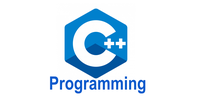Machine learning (ML) continues to revolutionize various industries, from healthcare to finance and technology. As we approach 2024, it’s crucial for aspiring data scientists and developers to be well-versed in the top machine learning programming languages.
In this comprehensive tutorial, we will see the most popular languages for ML and understand their features, pros, and cons. Whether you’re a beginner exploring the world of ML or an experienced practitioner, this guide will help you navigate the landscape and make informed decisions.
Read More: How To Use Beta Character AI For Artificial Chats
Let’s get started.
Python: The Versatile Workhorse
Python has emerged as the go-to language for machine learning, thanks to its simplicity, versatility, and rich ecosystem of libraries.

Here’s why Python is the top choice for ML:
>> Easy to Learn and Readable Code
Python’s clean syntax and simplicity make it an ideal language for beginners. Its readable code allows developers to quickly grasp ML concepts and implement them efficiently.
>> Extensive ML Libraries
It offers a wide range of ML libraries, such as scikit-learn, TensorFlow, and PyTorch. These libraries provide robust functionality, making complex ML tasks easier and more accessible.
>> Massive Community Support
Huge popularity in the ML community ensures ample resources, tutorials, and active forums. This supportive community allows developers to seek guidance, collaborate, and stay up to date with the latest ML advancements.
>> Strong Integration Capabilities
Python’s compatibility with other programming languages and frameworks makes it a powerful choice. It can seamlessly integrate with technologies like Apache Spark, Hadoop, and Django, enabling ML in various contexts.
>> Scalability and Performance
While Python may not be the fastest language, it performs exceptionally well when coupled with optimized libraries. Additionally, Python’s scalability allows effortless computation across clusters and GPUs.
R: The Statistical Powerhouse
R is a statistical programming language renowned for its powerful data analysis and visualization capabilities.

Many researchers and statisticians prefer R for ML due to its unique strengths:
>> Extensive Statistical Packages
R boasts a vast collection of statistical packages, making it a treasure trove for data analysis and visualization. Packages like caret and dplyr provide comprehensive solutions for ML tasks.
>> Data Handling and Manipulation
It excels at handling and manipulating datasets, especially when dealing with large amounts of data. Its data manipulation packages, such as tidyr and data.table, offer efficient ways to clean, transform, and preprocess data.
>> Strong Graphical Capabilities
Graphical libraries of R, like ggplot2 and lattice, allow data scientists to create stunning visualizations, aiding in data exploration and model evaluation. These visualizations enable clear communication of complex ML results.
>> Exceptional Statistical Support
R’s roots in statistical analysis translate into extensive support for statistical modeling and inference. It facilitates intuitive implementation of various statistical techniques, providing insights into ML models’ performance.
>> Research and Academic Adoption
R enjoys significant adoption in academia, with many researchers and universities utilizing it for ML applications. This popularity ensures the availability of advanced statistical techniques and cutting-edge research implementations.
Read More: How To Use Namelix To Generate Business Names
Java: Robust and Scalable
Java, known for its reliability and scalability, remains a popular choice for ML projects, especially in enterprise settings.

Here’s why Java stands out in the ML landscape:
>> Strong Ecosystem and Libraries
Java offers several ML libraries, such as Weka, Deeplearning4j, and MOA. These libraries facilitate a wide range of ML tasks, including classification, clustering, and natural language processing.
>> Enterprise-Grade Performance
This is an independent platform and highly optimized virtual machine (JVM) allow ML applications to scale effortlessly. Java’s multithreading capabilities further enhance performance in distributed computing environments.
>> Security and Robustness
It focus on security and robustness makes it a preferred choice for ML applications dealing with sensitive data. Its strict type-checking and exception-handling mechanisms ensure reliable and secure code execution.
>> Integration and Interoperability
Java’s integration capabilities enable seamless collaboration with other programming languages and systems. It can easily interface with databases, web applications, and big data frameworks like Apache Hadoop.
>> Community Support and Documentation
Java’s extensive community and comprehensive documentation provide abundant resources for ML developers. From online forums to tutorials and official documentation, developers can find answers to their queries and stay updated with new developments.
Julia: The Language for Speed and Simplicity
Julia is an emerging programming language built specifically for scientific computing and ML applications.

Here’s why Julia is gaining traction in the ML community:
>> High Performance
Julia’s dynamic nature enables developers to write high-level code that performs at near-native speeds. It combines the best of both worlds, offering the simplicity of scripting languages like Python with the performance of low-level languages like C++.
>> Compatibility with Existing Code
It seamlessly integrates with other programming languages like Python, R, and C, allowing developers to leverage existing codebases. This compatibility promotes code reuse and accelerates development processes.
>> Intuitive and Expressive Syntax
The syntax of Julia feels familiar to Python and MATLAB users, making it easy to learn and write ML code. Its expressive nature enables concise and readable implementations of complex ML algorithms.
>> Distributed Computing Capabilities
Julia’s built-in support for distributed computing makes it an excellent choice for ML tasks that require parallelism or distributed processing. It can efficiently scale across clusters of machines, unlocking massive computational power.
>> Growing Community and Libraries
Although relatively new, Julia’s community is rapidly expanding, along with an increasing number of libraries and resources. Julia’s ML ecosystem, including Flux and MLJ, provides tools and packages similar to other established languages.
Read More: Top 10 Latest AI Inventions Changing the Game of Future
C++: Complex But Efficient
C++ might not be the primary choice for beginners due to its complexity and steep learning curve compared to languages like Python, which are more beginner-friendly and have extensive ML libraries. Nonetheless, C++ remains a valuable language in the ML domain.

>> Performance
C++ is known for its high performance and efficiency. In ML, where performance is critical, C++ shines in executing complex algorithms and computations swiftly.
>> Resource Management
C++ offers greater control over memory management compared to some other languages used in ML like Python. This control is beneficial for handling large datasets and memory-intensive operations efficiently.
>> Libraries and Frameworks
C++ provides libraries and frameworks like MLpack and Shark that are designed for machine learning tasks. These libraries offer various algorithms and tools for data manipulation, making C++ a suitable choice for specific ML applications.
Conclusion
As we navigate into 2024, Python continues to dominate the ML landscape with its versatility and extensive library support. R remains a strong choice for data scientists with its statistical prowess and visualization capabilities. Java finds its niche in enterprise ML applications, relying on its robustness and scalability. Julia emerges as a promising language, combining speed, simplicity, and compatibility.
Remember, the choice of language ultimately depends on your specific needs, preferences, and the ML tasks at hand. Embrace the language that best aligns with your goals and embark on your machine learning journey with confidence.
That’s it.
We hope this article helped you to learn about Top 5 Programming Languages for Machine Learning Tutorial in a very detailed way.
Online Web Tutor invites you to try Skillshike! Learn CakePHP, Laravel, CodeIgniter, Node Js, MySQL, Authentication, RESTful Web Services, etc into a depth level. Master the Coding Skills to Become an Expert in PHP Web Development. So, Search your favourite course and enroll now.
If you liked this article, then please subscribe to our YouTube Channel for PHP & it’s framework, WordPress, Node Js video tutorials. You can also find us on Twitter and Facebook.
